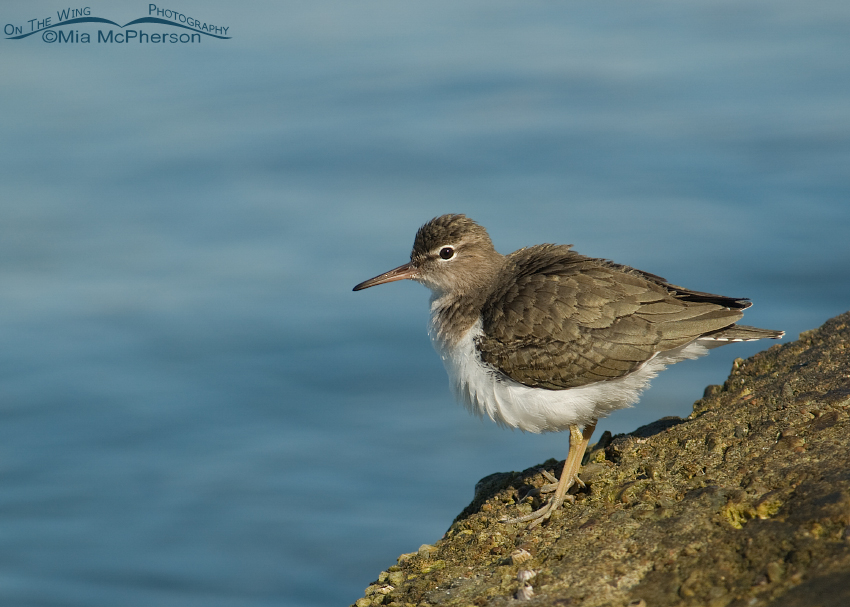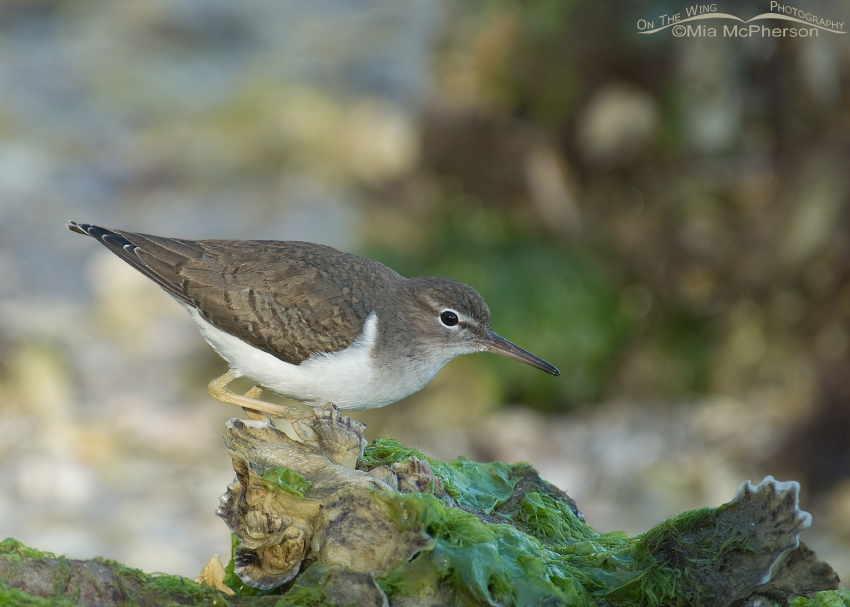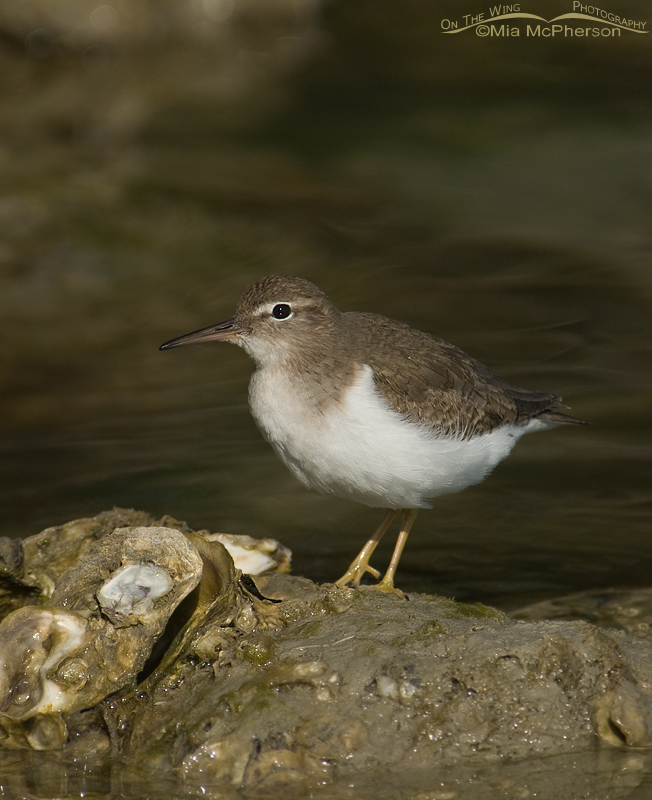 Fluffed up Spotted Sandpiper – Nikon D200, handheld, f6.3, 1/640, ISO 200, Nikkor 80-400mm VR at 400mm, natural light
Fluffed up Spotted Sandpiper – Nikon D200, handheld, f6.3, 1/640, ISO 200, Nikkor 80-400mm VR at 400mm, natural light
Spotted Sandpipers are fun to watch as they walk along the shoreline as they teeter, bob and seem to bounce their rear ends and that motion does make them easy to identify even from a distance. In short flights they flap their wings in short bursts and then glide and the flight pattern is distinctive enough to also use for identification. In North America these sandpipers winter in the lower southern states and Mexico.
 Spotted Sandpiper perched on oysters near the shoreline – Nikon D200, handheld, f6.3, 1/160, ISO 250, Nikkor 80-400mm VR at 400mm, natural light
Spotted Sandpiper perched on oysters near the shoreline – Nikon D200, handheld, f6.3, 1/160, ISO 250, Nikkor 80-400mm VR at 400mm, natural light
Spotted Sandpipers are the most widespread shorebirds found in North America. They breed across most of the United States, up into Canada and Alaska though they do not breed in the high Arctic tundra. An unusual mating habit that Spotted Sandpipers exhibit is that it is the females who become aggressive to defend the mating territory and will often mate with three or males during the breeding period.
They are coastal inhabitants and during migration and winter they can be found near freshwater, streams, beaches, rivers lake shorelines, ditches, small ponds seawalls and estuaries.
 An inquisitive look from a Spotted Sandpiper – Nikon D200, handheld, f6.3, 1/1250, ISO 320, Nikkor 80-400mm VR at 400mm, natural light
An inquisitive look from a Spotted Sandpiper – Nikon D200, handheld, f6.3, 1/1250, ISO 320, Nikkor 80-400mm VR at 400mm, natural light
All of the images I have presented in this post have shown the Spotted Sandpipers in nonbreeding plumage. I’m hoping that since I now live within their breeding range that I will be able to photograph the sandpipers with their spotted breeding plumage.
Life is good.
Mia
Click here to see more of my Spotted Sandpiper photos plus facts and information about this species.


Cute little guys! Love the light on the last one, and catch-lights in each one! Great job, as always!
Love the pics, so much expression! They look like little characters!
Well, that answers my question-where are the spots? They are awfully cute in their winter plumage. I’m looking forward to seeing their spots!
They are awfully cute in their winter plumage. I’m looking forward to seeing their spots!